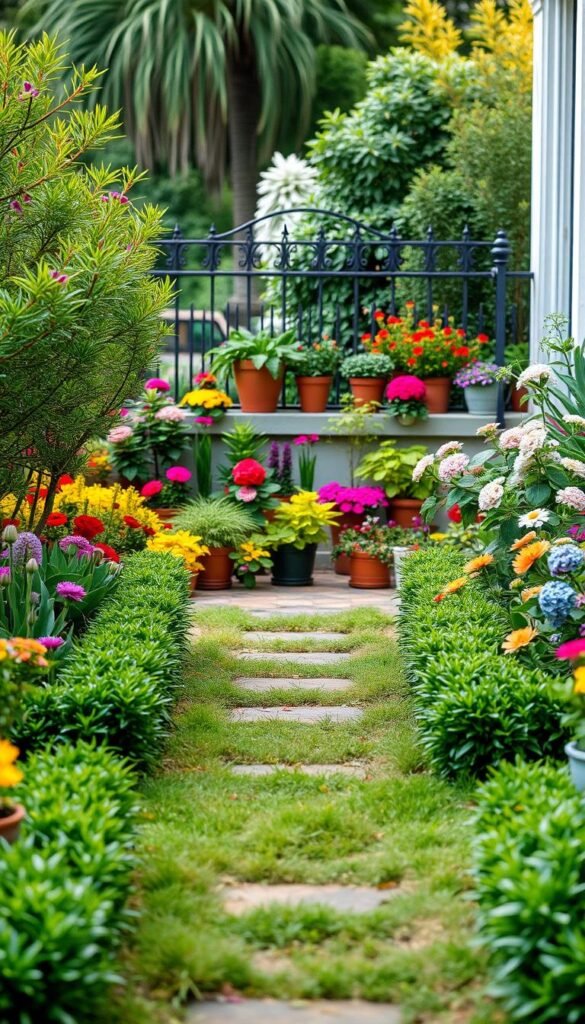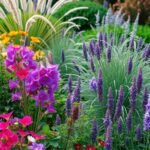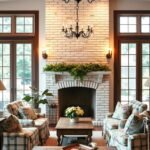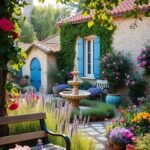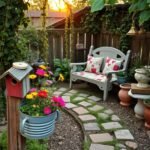Your entryway space does more than store bins or bikes—it’s a canvas for creativity. Even the tiniest patch of land can elevate your home’s personality and charm. Think of it as your property’s handshake: quick but memorable.
Compact outdoor areas let you experiment with styles that might feel overwhelming in larger spaces. Mix sun-loving succulents with shade-tolerant ferns, or swap plain walkways for patterned tiles. Every choice reflects your taste, turning limitations into design opportunities.
Elevation changes and vertical planters add depth without eating up square footage. Imagine lavender bordering a raised stone path or ivy climbing a trellis beside your door. These touches create visual interest while keeping the layout functional.
Don’t underestimate how a well-planned entrance boosts curb appeal. It’s not just about aesthetics—strategic upgrades can increase property value. Ready to reimagine what’s possible? Let’s explore ways to transform your outdoor introduction.
Transforming Your Front Garden: The Importance of First Impressions
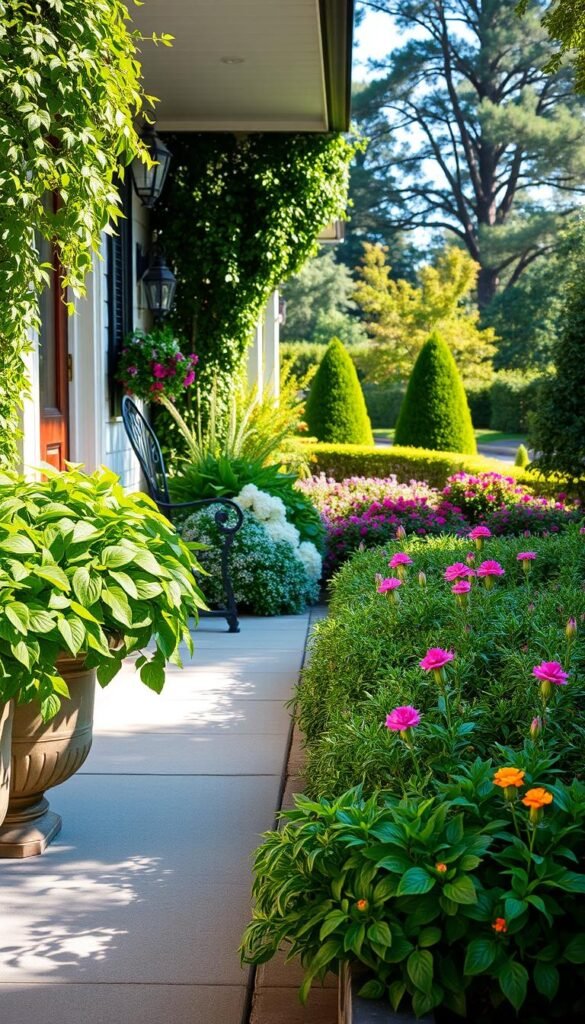
Your outdoor entry area speaks volumes before guests even step inside. A thoughtfully designed space doesn’t just look pretty—it invites connection and sets expectations for what lies beyond.
Creating a Welcoming Entrance
Start by framing your doorway like a masterpiece. Simple pots overflowing with seasonal blooms instantly draw the eye. Swap out pansies in spring for fiery red geraniums in summer, then transition to golden mums when autumn arrives. This rotating color scheme keeps things fresh with minimal effort.
Consider scale when arranging containers. Too many small pots create clutter, while oversized planters overwhelm narrow pathways. Balance is key—two matching urns flanking the door often make stronger statements than a dozen mismatched pieces.
Choosing the Right Plant Varieties
Plants are living decor, but they need the right stage to shine. Always check sunlight requirements on nursery tags before buying. Shade-loving hostas will crisp up in full sun, while sun-worshipping lavender droops in dark corners.
Prioritize these factors when selecting greenery:
- Mature size (no overcrowding)
- Water needs (group thirsty plants together)
- Bloom cycles (ensure year-round interest)
Hardy perennials like sedum or heuchera offer reliability, while annuals provide punchy seasonal color. Mix both for a dynamic yet manageable display that thrives in your specific climate.
10 Small Front Garden Ideas to Make a Great First Impression
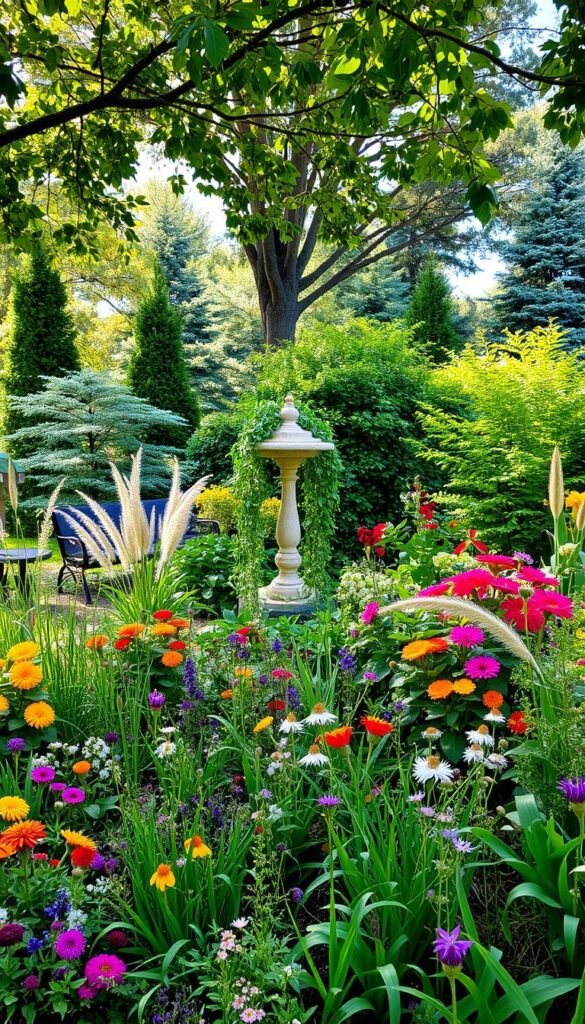
Limited square footage doesn’t mean sacrificing style. Your outdoor area becomes a playground for mixing textures, colors, and layouts that reflect your personality. Whether you lean toward structured elegance or wildflower charm, there’s a design approach that fits your vision.
Highlighting Diverse Garden Designs
Formal layouts use geometric shapes and trimmed hedges to create order. Picture boxwood spheres flanking a gravel pathway or symmetrical planters filled with uniform blooms. These choices work well with modern homes seeking polished curb appeal.
Cottage-style arrangements feel more relaxed. Combine climbing roses with lavender and daisies for a cheerful, informal vibe. This approach suits older houses or those wanting a nostalgic feel. Both styles prove that creative layouts can turn tight areas into memorable spaces.
| Design Style | Key Features | Maintenance Level |
|---|---|---|
| Modern Minimalist | Clean lines, monochromatic plants | Low |
| Bohemian Mix | Eclectic containers, trailing vines | Moderate |
| Coastal Inspired | Drought-tolerant grasses, pebble mulch | Very Low |
Mixing elements from different themes lets you craft a unique look. Try pairing structured stone edging with free-form flowering shrubs. This balance adds visual intrigue while keeping maintenance manageable. For more ways to elevate your gardening aesthetic, consider how textures interact—smooth leaves beside feathery grasses create depth even in tiny plots.
Your design choices should align with how much time you can devote to upkeep. Low-effort succulents thrive in sunny spots, while ferns add lushness to shaded corners without constant care. Remember: the best layouts marry beauty with practicality.
Incorporating Color, Texture, and Flowering Plants
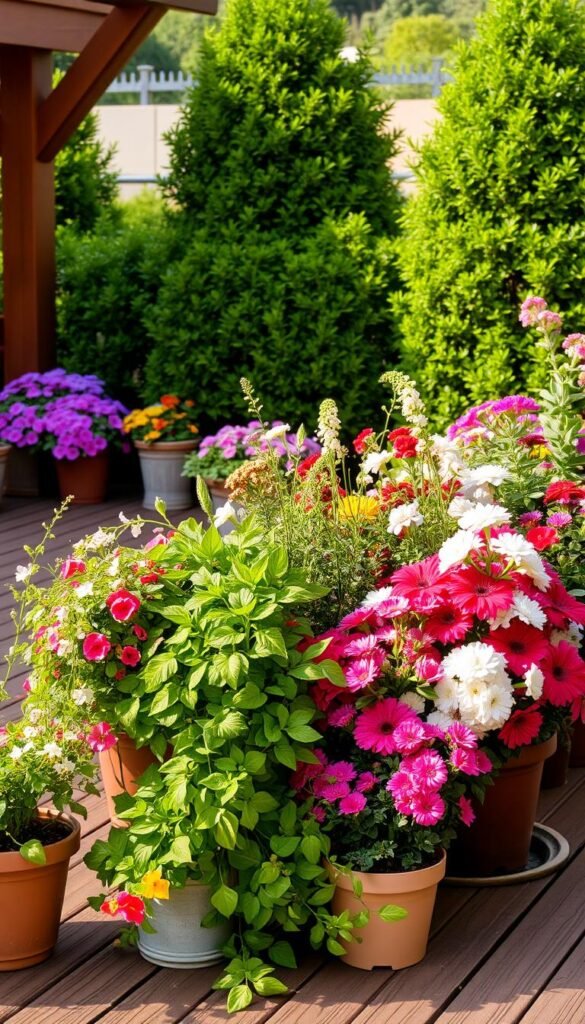
Color acts as your garden’s voice—it whispers “welcome” through vibrant petals and lush foliage. Strategic use of pots and containers lets you orchestrate this conversation without permanent changes. Even better: you can rearrange the cast of characters as seasons shift.
Using Potted Plants for Bold Statements
Group three to five containers near your entryway for instant drama. Early risers like primroses and pansies deliver spring color while other plants sleep. Pair them with trailing ivy or ornamental grasses for contrasting textures. Clustered pots create depth that scattered singles can’t match.
Try mixing ceramic urns with weathered metal troughs. The varied materials add visual weight, while coordinated bloom colors—like cobalt blue violas with lavender nemesia—tie the display together. “Play with unexpected combinations,” suggests a Seattle-based landscape designer. “A single bold container can anchor smaller accent pieces.”
Mixing Seasonal Blooms with Perennials
Balance fleeting beauty with lasting value by blending annuals and perennials. Plant tulips or daffodils in fall containers for early spring fireworks. As they fade, tuck heat-loving geraniums or petunias between established sedum or coral bells.
This approach offers three advantages:
- Reduces annual replanting costs
- Maintains structure during dormant seasons
- Allows quick color updates for holidays
Rotate bloomers based on your climate—swap pansies for marigolds as temperatures rise. In frost-free zones, tropical hibiscus in containers provides year-round flowering. Remember: succession planting keeps your display camera-ready from first thaw through autumn’s final curtain call.
Maximizing Limited Space with Containers and Raised Beds
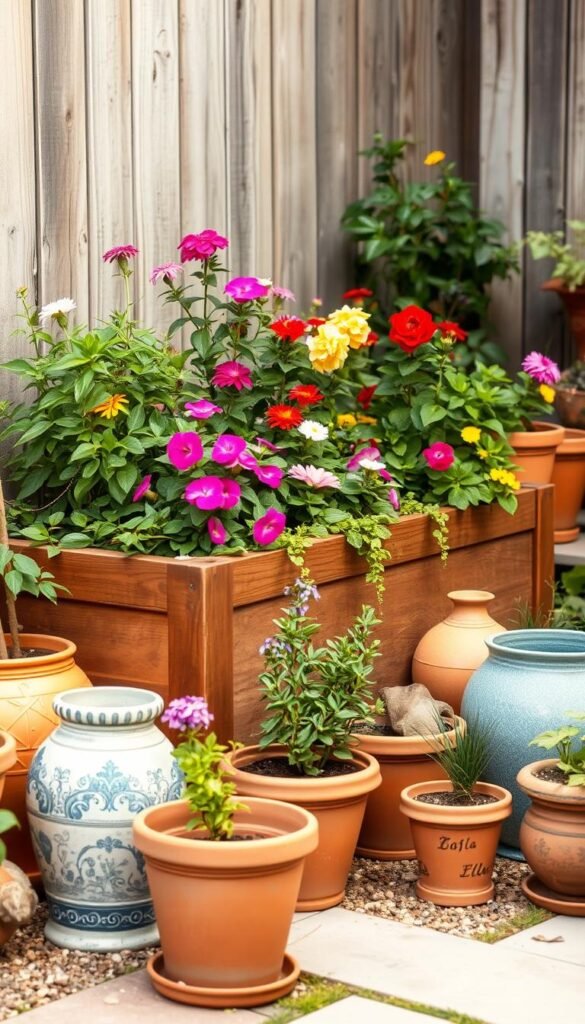
Tight on room? Your outdoor area can still dazzle through clever container arrangements and elevated planting zones. These solutions let you bypass traditional borders while adding structure and depth.
Smart Use of Planters and Window Boxes
Containers turn blank walls and narrow pathways into blooming galleries. Cluster three staggered pots near your entry—tall grasses in back, mid-height begonias in center, trailing lobelia up front. This layered approach creates vertical interest without crowding ground space.
Raised beds solve two problems: poor soil and low visibility. Build them 18-24 inches tall for optimal root depth and street-side impact. Fill with drought-tolerant sedum or seasonal pansies. “Elevated beds act like natural billboards,” notes a Denver landscaper. “They showcase plants at eye level for passing admirers.”
| Container Type | Space Benefits | Ideal Plants |
|---|---|---|
| Window Boxes | Utilize wall space | Petunias, herbs |
| Hanging Baskets | Overhead color | Fuchsias, ivy |
| Modular Planters | Expandable layouts | Succulents, thyme |
Match container sizes to your home’s scale. Oversized urns overwhelm cottage-style entries but complement grand porches. For cohesion, repeat materials like terracotta or corten steel across multiple planters.
Strategic placement guides foot traffic naturally. Line walkways with low rectangular troughs or flank steps with matching pots. These subtle boundaries define space while keeping sightlines open. Rotate displays seasonally—swap spring tulips for summer zinnias without disturbing permanent beds.
Embracing Vertical Elements with Hanging Baskets and Climbers
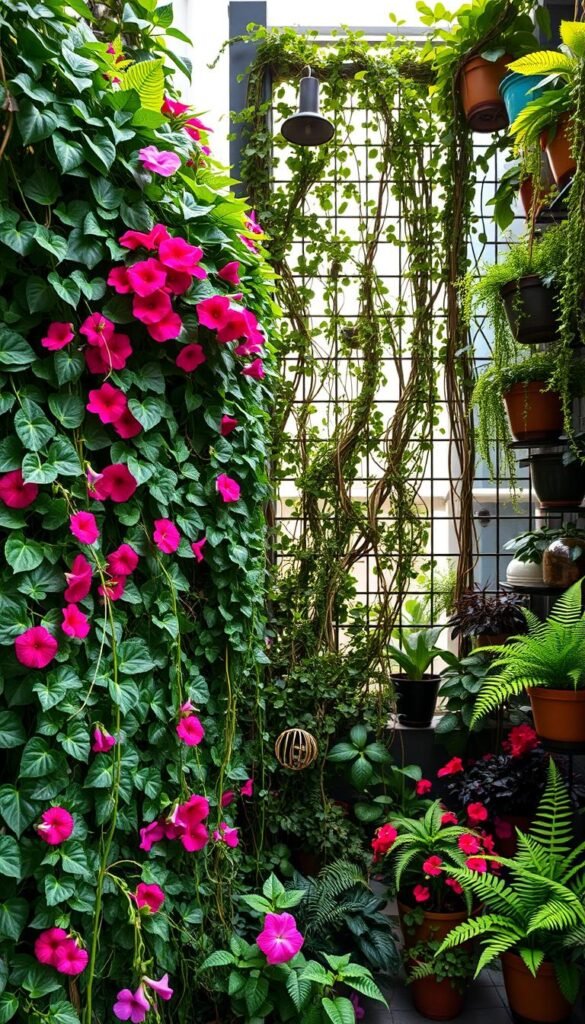
When ground space disappears, look upward. Walls, fences, and overhead areas become prime real estate for greenery. Vertical solutions let you cultivate charm without compromising pathways or seating zones.
Vertical Gardening Techniques
Hanging baskets transform blank walls into blooming waterfalls. Mix trailing petunias with sweet potato vine for a cascade of color. Position them near entryways to frame views while maximizing planting opportunities. Overhead displays create depth, making narrow areas feel spacious.
Climbing plants solve two problems: they add natural beauty and hide eyesores like utility boxes. Install a DIY trellis beside your door for clematis or morning glory vines. These structures guide growth while protecting surfaces from moisture damage.
| Climbing Plant | Growth Speed | Special Feature |
|---|---|---|
| Star Jasmine | Moderate | Fragrant blooms |
| Virginia Creeper | Fast | Fall color |
| Climbing Hydrangea | Slow | Year-round structure |
Choosing the Right Climbing Plants
Match plants to your climate and maintenance style. Fast-growing ivy covers walls quickly but needs frequent trimming. Slow-blooming wisteria offers dramatic spring flowers but requires sturdy support. Consider these factors:
- Sun exposure needs
- Mature height
- Pruning requirements
Fragrant options like honeysuckle near windows enhance outdoor enjoyment. Pair vertical elements with potted trees for layered interest—dwarf citrus in containers complements climbing roses beautifully.
Enhancing Curb Appeal with Hardscaping and Low-Level Fences
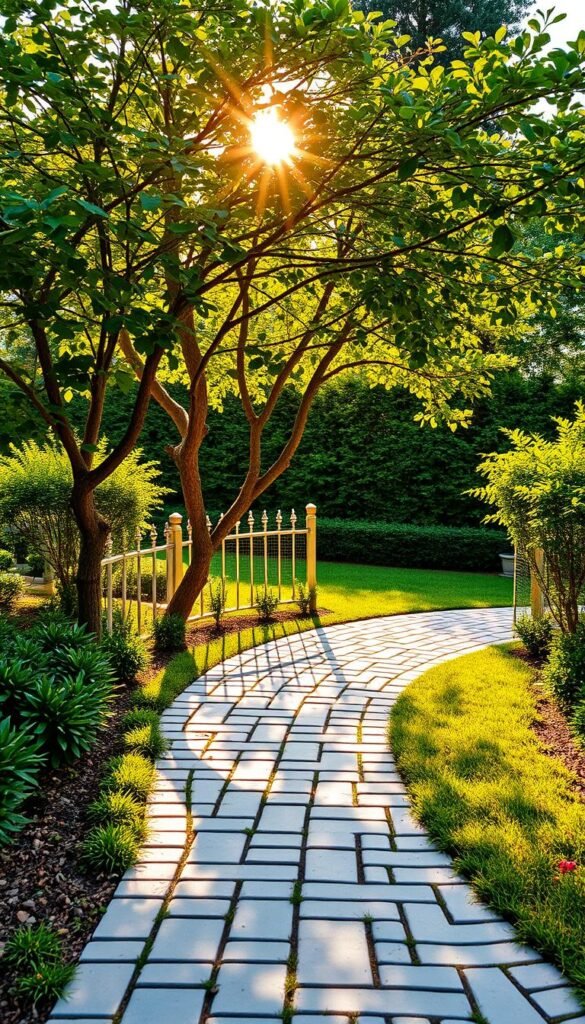
Redefine your outdoor canvas by swapping green carpets for artistic hardscapes. Tiled surfaces and patterned paving offer durable alternatives to traditional lawns, especially in cozy spaces. These materials establish clean foundations for planters or seating while slashing weekly maintenance.
Integrating Tiled Paths and Patterned Paving
Permanent surfaces like flagstone or porcelain tiles transform pathways into design statements. Geometric patterns draw eyes toward your entry, while natural stone textures blend with rustic themes. Unlike grass, these materials withstand foot traffic and weather without constant care.
Consider these popular hardscaping options:
| Material | Key Benefit | Best For |
|---|---|---|
| Concrete Pavers | Cost-effective | Modern layouts |
| Reclaimed Brick | Vintage charm | Cottage styles |
| Permeable Gravel | Drainage-friendly | Sloped areas |
Low fences under three feet maintain boundaries without blocking sightlines. Wrought iron or horizontal slat designs keep the space feeling airy. Pair them with climbing roses or clematis for softness against structured materials.
Match your paving colors to your home’s trim or shutters for cohesion. A Denver landscaper notes: “Coordinated hardscapes make properties appear thoughtfully designed, not just decorated.” Permeable options like crushed granite prevent puddling while supporting container displays.
Budget-Friendly Tips for a Stunning Small Front Garden
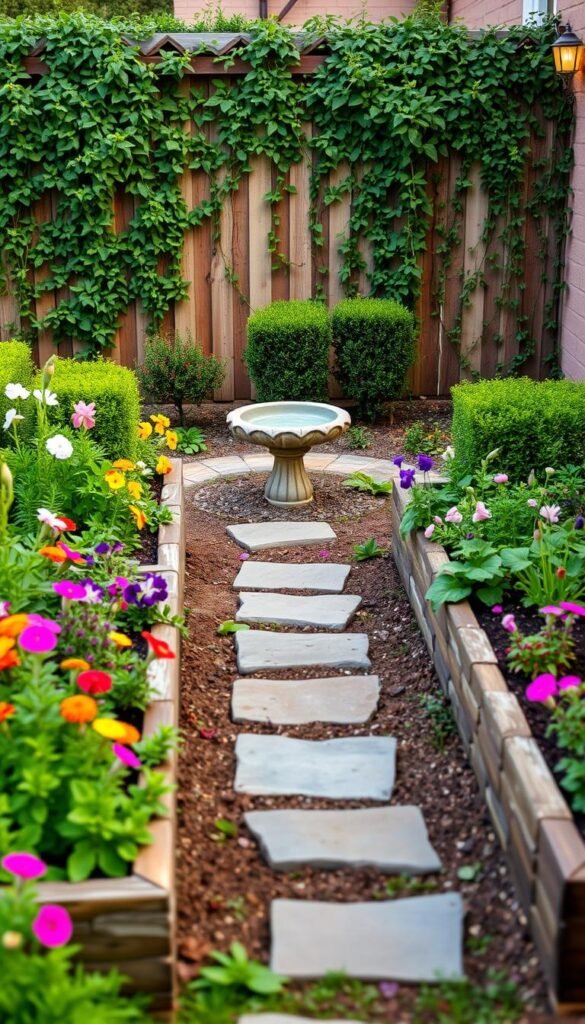
Crafting an inviting outdoor space doesn’t require deep pockets—just smart strategies. Your compact area offers unique advantages: fewer materials mean higher-quality options stay affordable. Let’s explore how to stretch your dollars while creating lasting charm.
Affordable Plant and Material Options
Start with wildflower seed mixes—they’re cost-effective and bloom within weeks. These pollinator magnets transform sparse patches into lively meadows. For hardscaping, sample-sized tile packs or leftover paint from home projects add personality without bulk expenses.
Consider these wallet-friendly materials:
- Crushed gravel for pathways (drains better than pavers)
- Mulch from local tree services (often free)
- Divided perennials from friends’ gardens
A Portland landscaper notes: “Clients save 40% using reclaimed bricks as edging. They add character while defining spaces.” Time purchases strategically—nurseries discount plants late in seasons when they’re still viable.
DIY Projects to Maximize Impact
Transform old containers into statement pieces with exterior-grade paint. Pallet wood becomes instant trellises for climbing beans or morning glories. These great way projects personalize your space while building practical skills.
| DIY Idea | Cost | Time Required |
|---|---|---|
| Painted Rock Borders | $5-10 | 1 hour |
| Upcycled Tin Can Planters | Free | 30 minutes |
| Mason Bee House | $15 | 2 hours |
Join local plant swap groups to diversify your collection. One hydrangea cutting can yield three new plants through propagation. Regular deadheading and proper watering keep displays vibrant longer, reducing replacement needs.
Personalizing Your Space with Unique Seating and Outdoor Features
Your outdoor area becomes more than a pass-through zone when you add intentional resting spots. A slim bench tucked beside lavender or a folding stool under a climbing rose transforms overlooked corners into purposeful retreats. These additions invite you to pause and savor your handiwork.
Blending Form and Function
Choose furniture that mirrors your garden’s scale. A narrow teak bench fits snugly between planters without blocking pathways. Built-in stone seating along retaining walls doubles as structural support while offering impromptu perches. Match materials to your landscape—rustic cedar complements wildflowers, while powder-coated metal suits modern designs.
Rotate seasonal accents around seating areas for fresh appeal. Plant mint or thyme in nearby containers for fragrant brushing as you sit. In autumn, swap summer geraniums for ornamental kale—its ruffled leaves pair beautifully with mums. This living decor keeps your space dynamic year-round.
Strategic placement matters most. Position seats where you’ll actually use them: near the door for shoe changes, or facing favorite blooms for morning coffee. Your front yard becomes a place to connect with neighbors or enjoy quiet moments—proof that even compact gardens can nurture joy.

